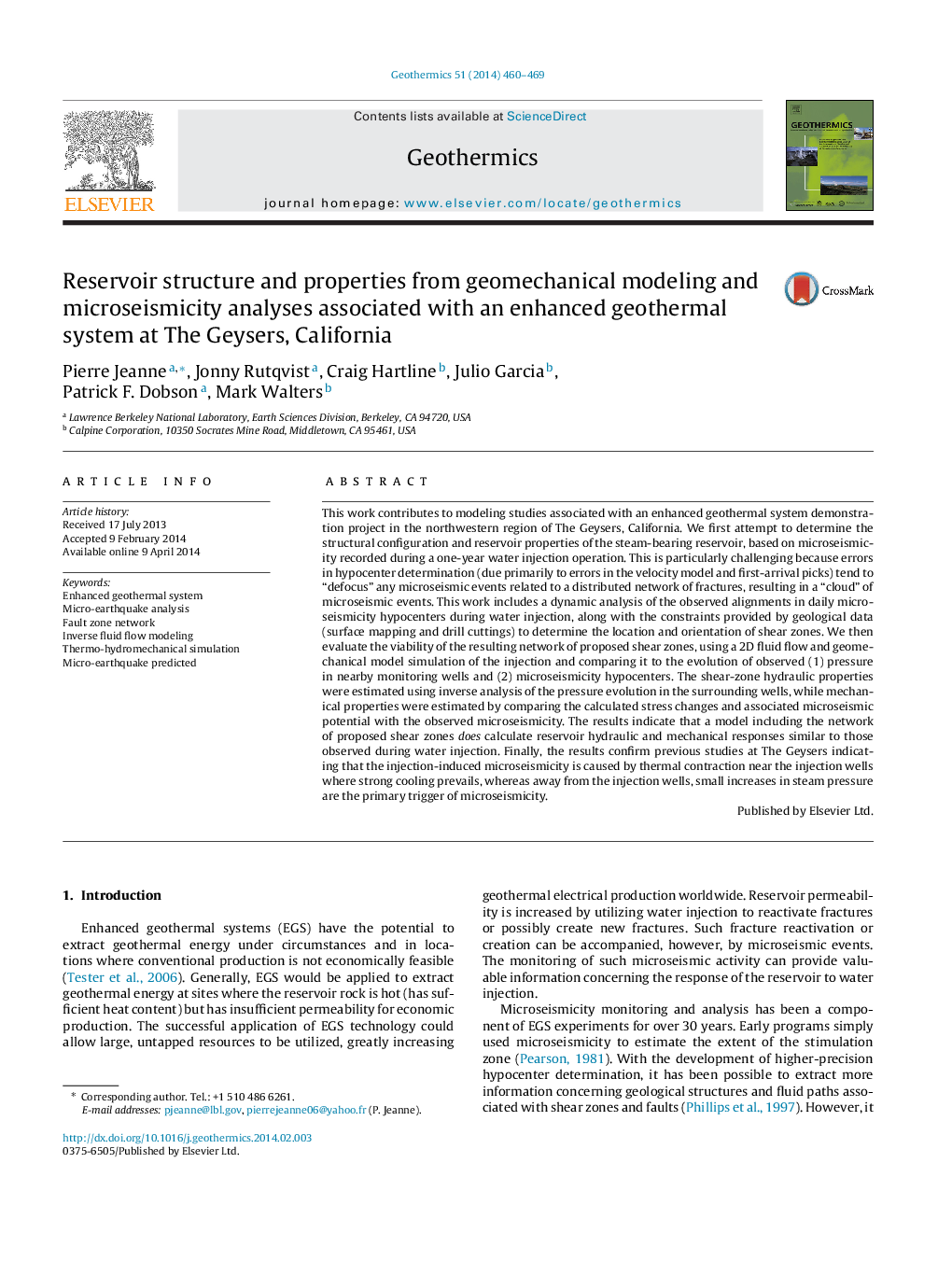| کد مقاله | کد نشریه | سال انتشار | مقاله انگلیسی | نسخه تمام متن |
|---|---|---|---|---|
| 1742407 | 1521917 | 2014 | 10 صفحه PDF | دانلود رایگان |

• Microseismicity (MEQ) analysis to characterize the structural reservoir properties.
• Hydraulic properties determined by an inverse fluid flow modeling.
• Geomechanical simulation to fit the predicted MEQ potential and the observed MEQ.
• The main cause of inducing MEQ is related to injection-induced pressure increase.
• MEQ distribution is strongly influenced by the regional geological setting.
This work contributes to modeling studies associated with an enhanced geothermal system demonstration project in the northwestern region of The Geysers, California. We first attempt to determine the structural configuration and reservoir properties of the steam-bearing reservoir, based on microseismicity recorded during a one-year water injection operation. This is particularly challenging because errors in hypocenter determination (due primarily to errors in the velocity model and first-arrival picks) tend to “defocus” any microseismic events related to a distributed network of fractures, resulting in a “cloud” of microseismic events. This work includes a dynamic analysis of the observed alignments in daily microseismicity hypocenters during water injection, along with the constraints provided by geological data (surface mapping and drill cuttings) to determine the location and orientation of shear zones. We then evaluate the viability of the resulting network of proposed shear zones, using a 2D fluid flow and geomechanical model simulation of the injection and comparing it to the evolution of observed (1) pressure in nearby monitoring wells and (2) microseismicity hypocenters. The shear-zone hydraulic properties were estimated using inverse analysis of the pressure evolution in the surrounding wells, while mechanical properties were estimated by comparing the calculated stress changes and associated microseismic potential with the observed microseismicity. The results indicate that a model including the network of proposed shear zones does calculate reservoir hydraulic and mechanical responses similar to those observed during water injection. Finally, the results confirm previous studies at The Geysers indicating that the injection-induced microseismicity is caused by thermal contraction near the injection wells where strong cooling prevails, whereas away from the injection wells, small increases in steam pressure are the primary trigger of microseismicity.
Journal: Geothermics - Volume 51, July 2014, Pages 460–469